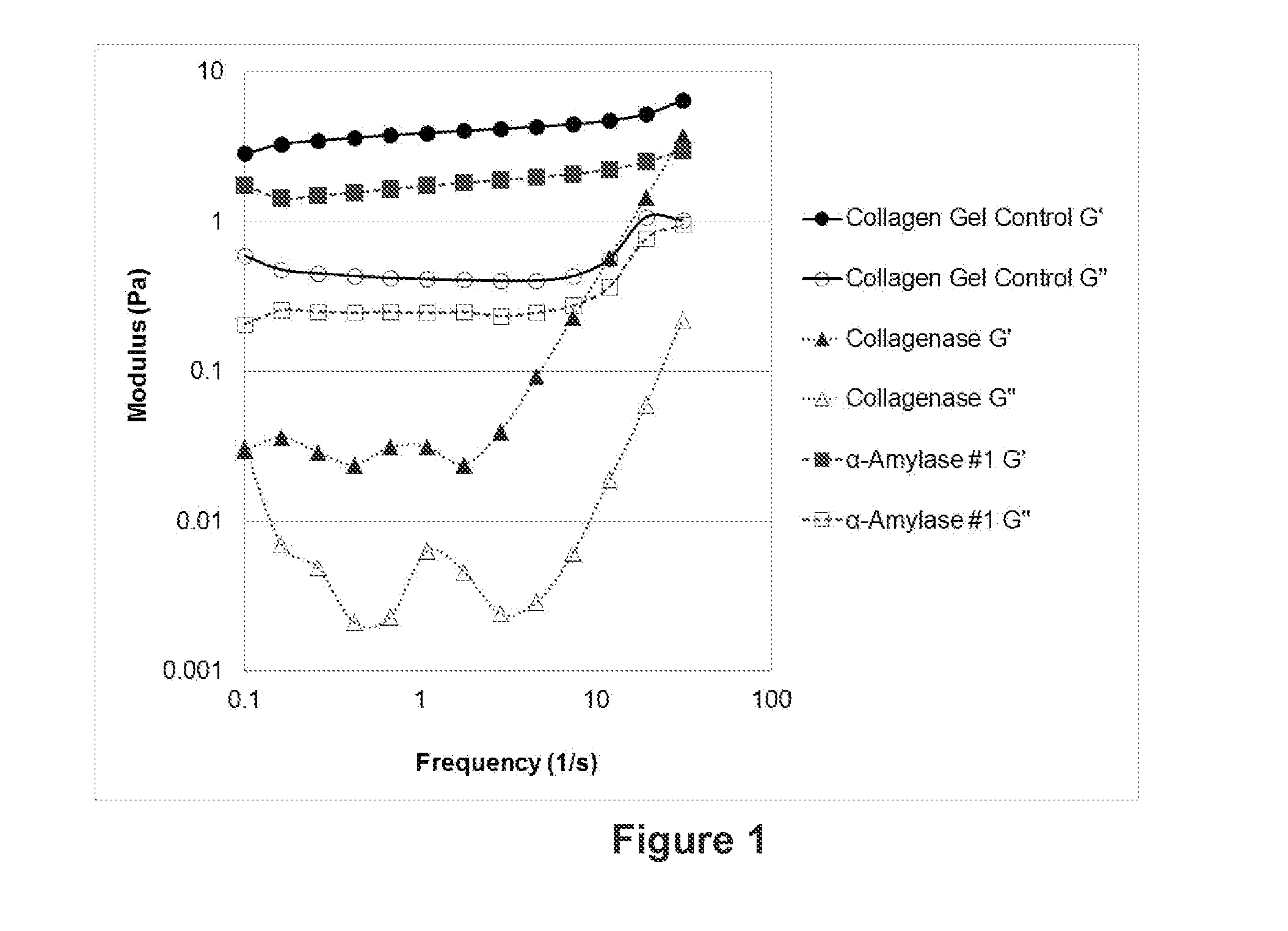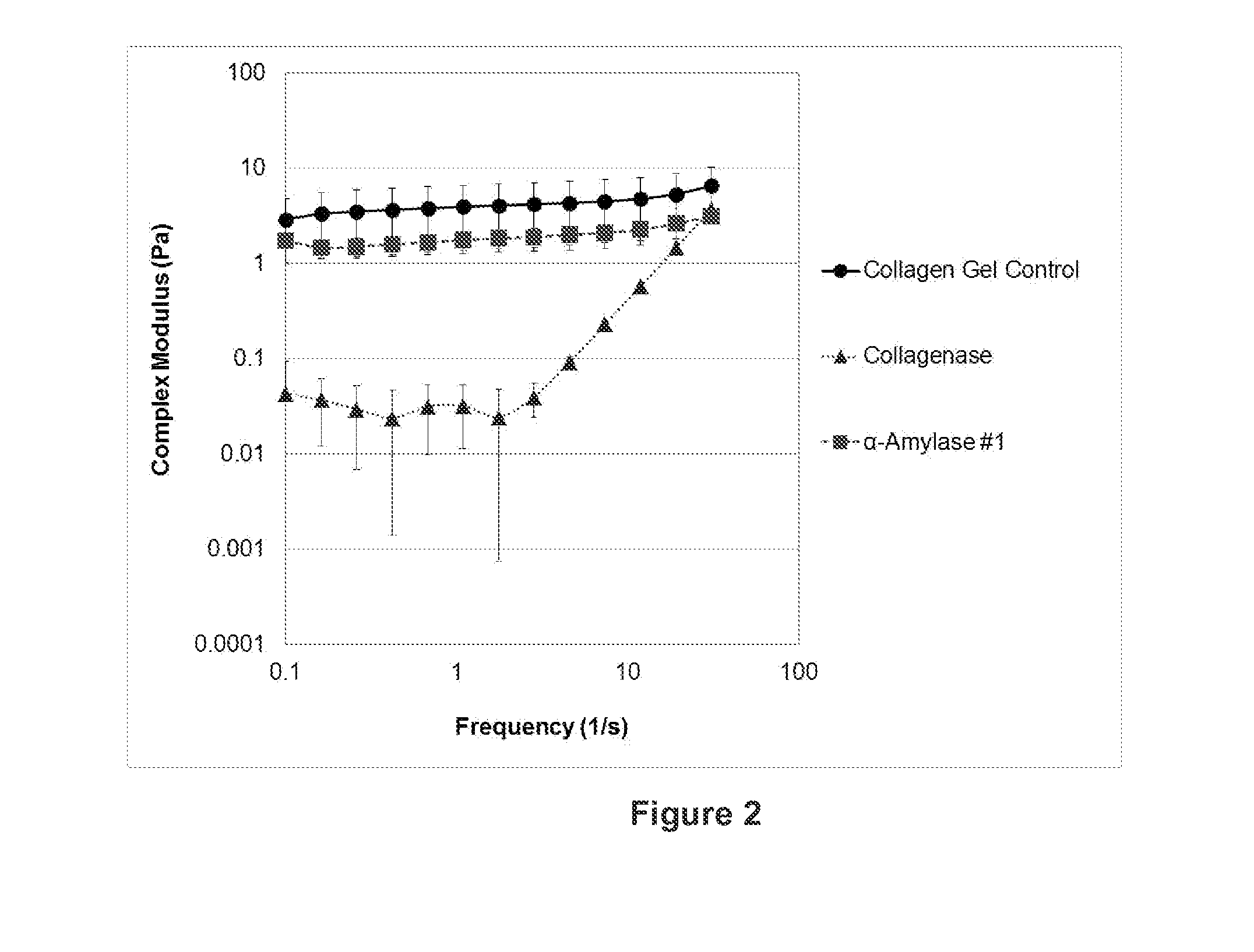Compositions and kits for treating pruritus and methods of using the same
a technology for pruritus and preparations, applied in the field of treatment, amelioration, and prevention of pruritus, can solve the problems of skin irritation, infection, bleeding and infection, wound healing after injury or surgery is often accompanied by localized itching, and antihistamines are not effective in some forms, so as to reduce local inflammation, promote healing, and control odor
- Summary
- Abstract
- Description
- Claims
- Application Information
AI Technical Summary
Benefits of technology
Problems solved by technology
Method used
Image
Examples
example 1
[0154]A male Caucasian septuagenarian applied bacterial α-amylase #6 solution to his skin damaged by pruritus, which resulted in inflamed red welts caused by scratching. The α-amylase solution was adjusted to pH 7 by NaOH, at a ratio of water / amylase of 99.6610.34 by weight, wherein the α-amylase activity was 1 g / 25,000 U. The solution was wiped onto inflamed, pruritic skin containing red welts using a non-woven cloth treated with the enzyme formulation. The solution was left on the skin for 10 minutes, with no observable discomfort, and removed by wiping several times with a wet cloth. The pruritus was reduced approximately 15 minutes after initial application, and the skin remained in a less inflamed state for at least 12 hours. The process was repeated every 12 hours for two days with elimination of pruritus and marked reduction and elimination of red welts.
example 2
[0155]On another area of pruritic skin with irritation and inflammation, the above mentioned male utilized an antimicrobial amylase formulation based upon 25 mg of porcine pancreatic α-amylase #3 mixed in 21 g of PHMB-based Antimicrobial Composition (AC), prepared in 4 glass vials containing 5.0 ml amylase / AC per vial. Over a period of 48 hours, the content of each of the 4 vials were applied on a non-woven fabric every 12 hours to cleansed pruritic skin. Itching was abated during the first treatment, and irritation and inflammation greatly reduced after 48 hours.
example 3
[0156]A 70 year old Caucasian female was bitten by mosquitoes over a two day period. The first area affected was untreated and resulted in a red, itchy bump of approximately one-quarter inch in diameter by day 2. On the second day, another mosquito bite occurred, becoming rapidly itchy. The second bite was as pruritic as the first bite and a powder of bacterial α-amylase #6 was applied directly to both affected areas (i.e., the first and second bites). The first bitten area had a decreased redness and decreased irritation after 15 minutes of treatment, whereas the second bitten area had decreased redness and elimination of pruritus with no red bump occurring.
PUM
| Property | Measurement | Unit |
|---|---|---|
| temperature | aaaaa | aaaaa |
| temperature | aaaaa | aaaaa |
| osmolality | aaaaa | aaaaa |
Abstract
Description
Claims
Application Information
 Login to View More
Login to View More - R&D
- Intellectual Property
- Life Sciences
- Materials
- Tech Scout
- Unparalleled Data Quality
- Higher Quality Content
- 60% Fewer Hallucinations
Browse by: Latest US Patents, China's latest patents, Technical Efficacy Thesaurus, Application Domain, Technology Topic, Popular Technical Reports.
© 2025 PatSnap. All rights reserved.Legal|Privacy policy|Modern Slavery Act Transparency Statement|Sitemap|About US| Contact US: help@patsnap.com


